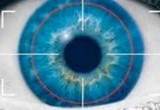How does aging effect biometrics?
initial studies suggest Iris may be good for a decade or more
03 February, 2014
category: Biometrics, Corporate, Financial
To truly get a picture of how age progression impacts biometrics, researchers need operational data from systems. Lab tests just won’t cut it. The problem is that the vast majority of biometric systems haven’t been deployed for long enough to really evaluate the toll that time takes.
“There’s no way to fake it, you need aged data,” says Patrick Grother, a computer scientist and Biometric Testing Project leader at the National Institute of Standards and Technology. Even the popular fingerprint modality hasn’t been adequately tested for aging to know how time impacts the systems.
NIST has embarked on a range of studies examining the different biometric modalities and the impact of time, Grother says. The group released its first study, examining the stability of iris biometrics over an eight-year span.
Researchers examined anonymous data from millions of transactions from NEXUS, a joint Canadian and American expedited border crossing program used by travelers to move quickly across the Canadian border. As part of NEXUS, members’ irises are enrolled into the system, scanned and then matched to system files when they travel across the border. NIST researchers also examined a larger, but less controlled set of anonymous statistics collected over a six-year period.
In both large-population studies, NIST researchers found no evidence of a widespread aging effect, said Grother. A NIST computer model estimates that iris recognition of average people will typically be useable for decades after the initial enrollment.
“We used a mixed effects regression model to capture population-wide aging and individual-specific aging as well as to estimate the aging rate over decades,” said Grother. “We hope these methods will be applicable to other biometric aging studies – such as face aging – because of their ability to represent variation across individuals who use a biometric system infrequently.”
A previous study had suggested that iris did not remain stable with age, reporting an increase in false rejection rates over time. NIST researchers reanalyzed the images from the earlier study’s 217 subjects. They found that while the rejection numbers were high, the results did not necessarily demonstrate that the iris itself was changing. Researchers instead identified pupil dilation as the primary cause for the false rejections.
NIST researchers showed that due to an unknown external cause, dilation in the original pool of subjects increased in the second year of the test and decreased the next. When they accounted for the dilation changes, researchers didn’t observe an aging effect.
NIST is planning to do age comparison studies with other modalities as well, Grother says. The agency is hoping to look at facial recognition and the impact of aging. “It’s clear that teenagers’ appearances change more rapidly than adults, but what about when people get into their 20s and 30s?” he asks. “We need to look at that data.”




